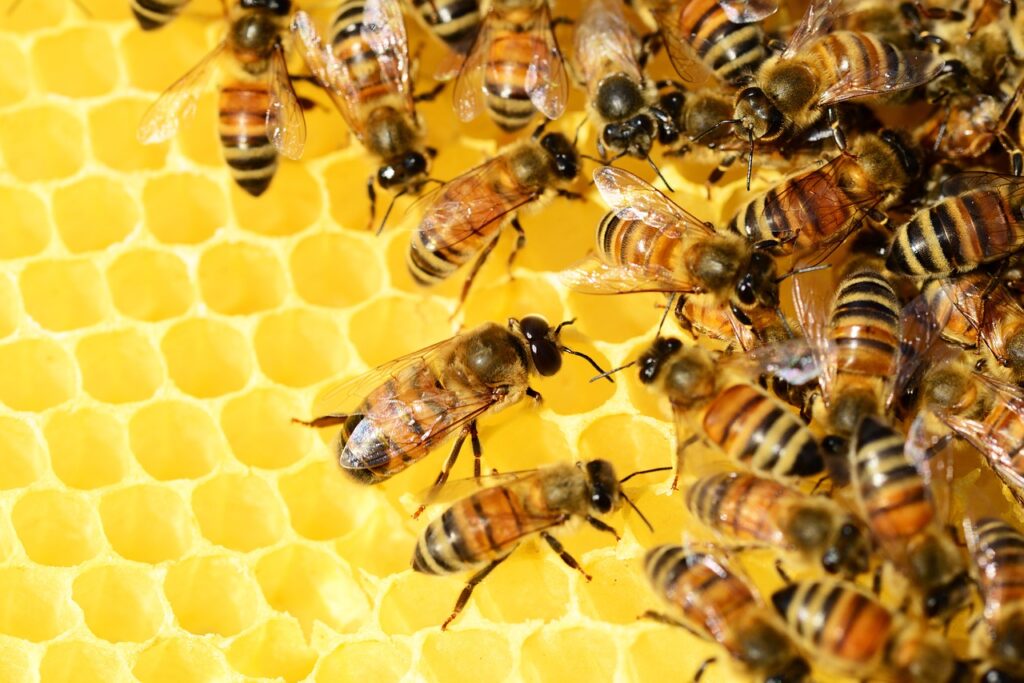Discovering a beehive on your property can be both concerning and fascinating. Bees play a crucial role in pollination and the overall health of our ecosystems, but having a beehive near your living spaces can also pose a safety risk. If you find yourself facing a bee infestation, it’s important to handle the situation with care and respect for these essential insects. This article outlines safe strategies for DIY beehive removal to help you navigate this potentially challenging situation.
Assess the Situation
Before taking any action, it’s essential to assess the situation and determine the extent of the infestation. Different types of bees have different behaviors and nesting habits. Identify the species of bees you’re dealing with, as this information will help you choose the appropriate approach for removal.
Honeybees are the most common species kept by beekeepers and are generally less aggressive if not provoked. On the other hand, more aggressive species like Africanized honeybees (commonly referred to as “killer bees”) require extra caution due to their tendency to react defensively in larger numbers.
The Importance of Bee Preservation
Bee populations worldwide are facing serious challenges due to habitat loss, pesticide exposure, and disease. As you plan your beehive removal, consider the possibility of safely relocating the colony rather than exterminating it. Beekeeping associations and local beekeepers may be willing to assist you in this process, helping to ensure the survival of the colony and benefiting both the bees and your community.
DIY Beehive Removal Steps
- Research and Gather Supplies
Before attempting any removal, educate yourself about the specific species of bees you’re dealing with and the appropriate equipment for the job. Basic supplies may include protective clothing (such as a bee suit, gloves, and a veil), a smoker to calm the bees, a bee brush, and a box for temporary relocation.
- Choose the Right Time
Bees are generally less active during cooler hours, such as early morning or late evening. Choose a time when the majority of bees are inside the hive to minimize the risk of agitation during removal.
- Wear Protective Gear
Put on your protective clothing to shield yourself from bee stings. A bee suit, gloves, and a veil are essential to prevent stings on exposed skin.
- Use Smoke
A bee smoker is a tool that releases cool, calming smoke into the hive. This action mimics the response bees would have to a natural fire and encourages them to consume honey, which makes them less aggressive.
- Gently Remove Comb
Carefully open the hive and remove the combs. Use a bee brush to gently sweep bees off the combs. Avoid sudden movements and loud noises that could provoke the bees.
- Relocate the Colony
If the situation allows, consider relocating the colony instead of exterminating it. You can place the combs with the bees into a prepared bee box. Seal the box and transport it to a safe location for release.
- Seek Professional Help
If the infestation is too large or the bees are particularly aggressive, it’s best to seek assistance from professional beekeepers or pest control experts who specialize in bee removal. They have the experience and equipment to handle challenging situations safely.
Safety First
During any DIY beehive removal, prioritizing your safety and the safety of others is paramount. Bee stings can cause severe allergic reactions in some individuals, so it’s crucial to take all necessary precautions. If you or someone else experiences an allergic reaction to bee stings, seek medical attention immediately.
Preventing Future Infestations
After successfully removing the beehive, take measures to prevent future infestations. Seal any potential entry points around your home, such as gaps in siding, cracks in walls, or holes in roofs. Regularly inspect your property for signs of new bee activity.
Handling a bee infestation can be a delicate task that requires knowledge, patience, and the right equipment. DIY beehive removal is possible, but it’s essential to approach the situation with care and respect for these vital pollinators. Prioritize safety and consider the preservation of the colony whenever possible. If you’re unsure about the removal process, don’t hesitate to seek assistance from professionals who can ensure a safe and successful outcome for both you and the bees.

